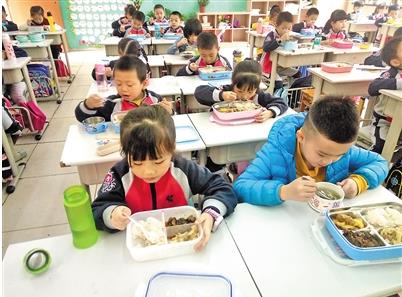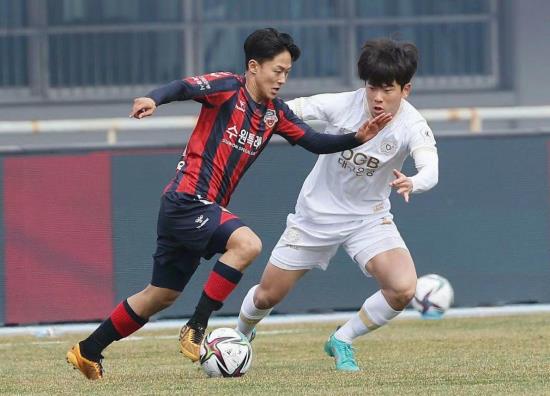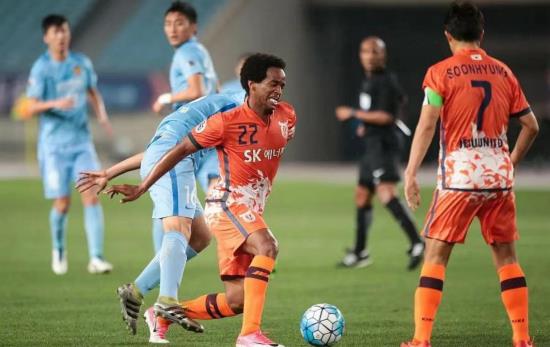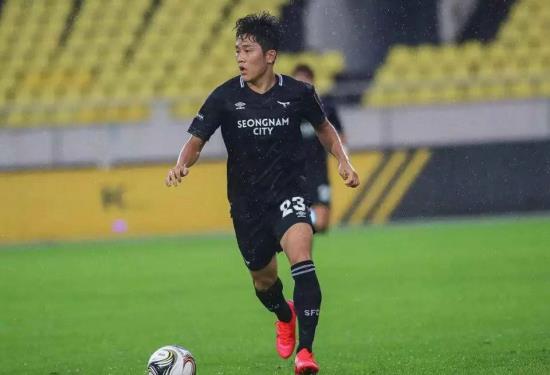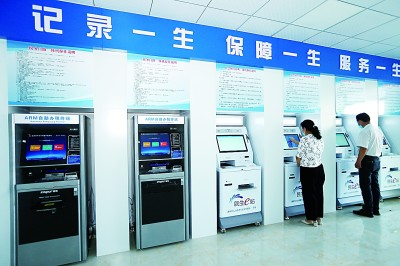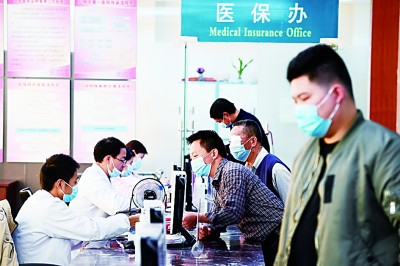On the evening of October 18th, NVIDIA officially announced two entry-level graphics cards GeForce GTX 1050 and 1050 Ti of its GeForce GTX 10 series, completing the last puzzle of Pascal architecture graphics cards.The biggest selling point is that it can buy good game performance and ultra-low power consumption around 1000 yuan. The main audience is the vast number of online game enthusiasts and users who operate Internet cafes, and it has launched a fatal blow against AMD’s Radeon RX 460.
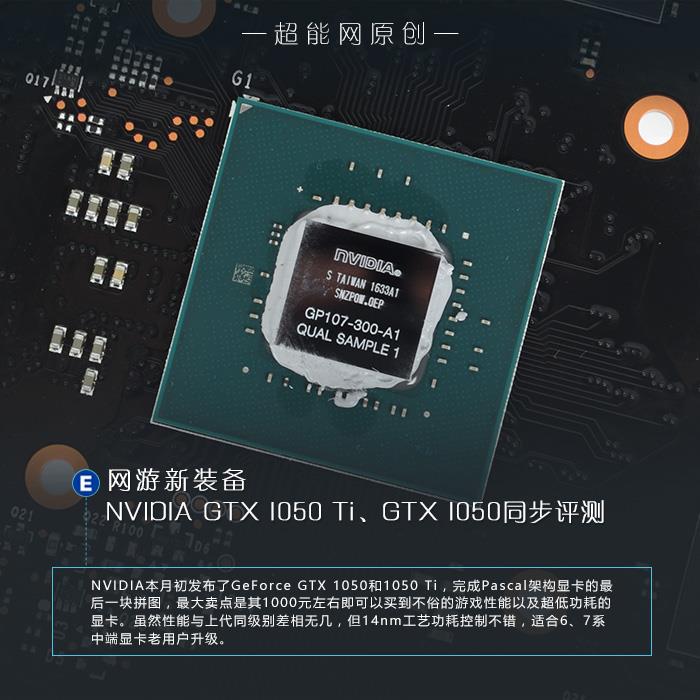
This year, NVIDIA’s Pascal architecture graphics card let us see its 40% crazy basic frequency increase, while continuing the previous generation’s 1:32 single and double precision unit ratio and the new 16nm production to bring extremely low energy consumption, which is amazing. As the last puzzle of Pascal architecture graphics card, GTX 1050 and GTX 1050 Ti all adopt brand-new GP107 cores.
GP107 core architecture
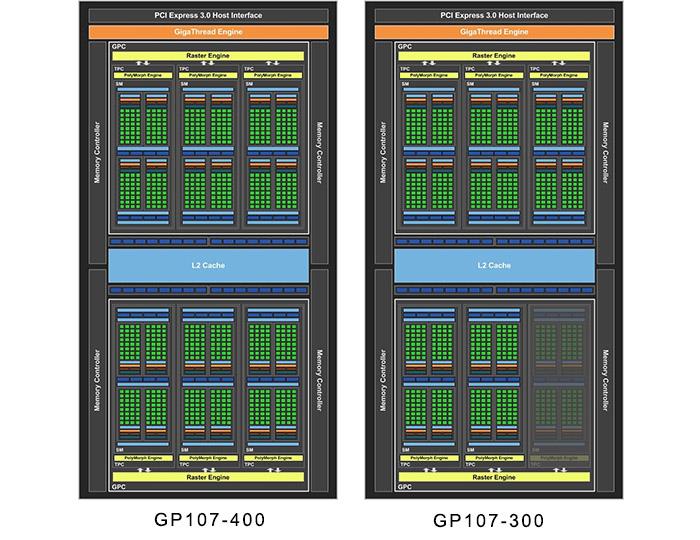
GTX 1050 Ti adopts GP107-400 GPU core, and its SM units are reduced to 6 groups, and each group of SM units still has 128 CUDA stream processors, with a total of 768 CUDA stream processors, 32 ROP raster units and 48 TMU texture units.
On the other hand, GP107-300 adopted by GTX 1050 is a further step on GP107-400, and continues to "reduce" a group of SM units, so that the CUDA stream processor is reduced to 640, 40 TMU texture units, while 32 ROP grating units remain unchanged.
14nm process doubt cloud
As early as before the release of GTX 1080 this year, there were rumors that NVIDIA’s new GPU core would be handed over to Samsung’s 14nm FinFET process, but the GTX 1080, 1070 and 1060 released later were still TSMC’s 16nm FinFET process. I didn’t expect Samsung’s 14nm FinFET process to appear on the GP107 core of GTX 1050 and GTX 1050 Ti.
Although Samsung’s 14nm FinFET process was mass-produced earlier and accumulated many important technologies, re-selecting the 14nm process will bring many sequelae, such as investing more money for improvement, and it will take a lot of time to re-stream the film, and the previous output is definitely very limited. Therefore, many manufacturers revealed that GTX 1050 Ti will be the main product in the early stage, and the large-scale distribution of GTX 1050 will be delayed by one month.
GTX 1050 Ti and GTX 1050 graphics card specifications
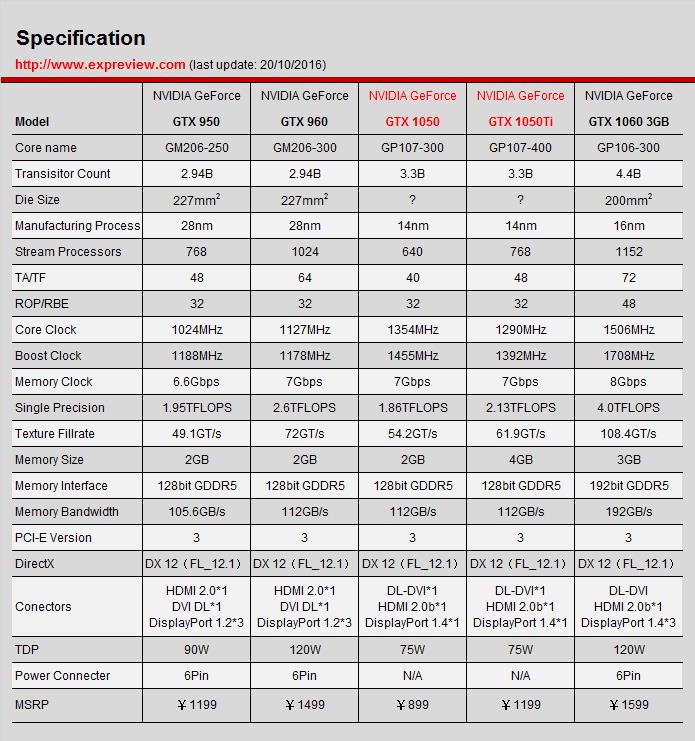
In terms of frequency, compared with the basic frequencies of big brothers GTX 1080, 1070 and 1060, it is almost 1506MHz, and it is a bit weak to change the basic frequency of GTX 1050 Ti and GTX 1050 with Samsung’s 14nm process. The fundamental frequency of GTX 1050 Ti is 1290MHz and the acceleration frequency is 1392MHz. In order to make up for the performance loss of a group of SM units, the fundamental frequency of GTX 1050 is increased to 1354MHz and the acceleration frequency is 1455MHz. Its overclocking ability needs further testing.
In floating-point performance, GTX 950 is between GTX 1050 Ti and GTX 1050, and GTX 960 is better than both. Considering the performance improvement brought by frequency, it is speculated that the performance of GTX 1050 Ti and GTX 1050 of Pascal architecture should be similar to that of GTX 960, but better than that of GTX 950.
In terms of memory, GDDR5 memory continues to be used, but the frequency is reduced to 7Gbps, and the bit width of both memory is still 128bit, and the total bandwidth is consistent with the previous generation GTX 950′ s 112 GB/s. GTX 1050 Ti is equipped with 4GB memory, which is more than GTX 1060 3GB. And the younger brother GTX 1050′ s memory capacity is reduced to 2GB, which forms differentiated competition.
In terms of power consumption, compared with the 90W TDP of the previous generation GTX 950, GTX 1050 and GTX 1050 Ti with the most advanced 14nm technology have made great progress, only 75W, so PCI-E power supply can meet the demand. However, some manufacturers will add 6Pin external power supply in pursuit of overclocking capability.
In terms of display interface, GTX 1050 Ti and GTX 1050 remove two DisplayPort 1.2 interfaces, leaving only one interface for DL-DVI, HDMI 2.0 and DisplayPort 1.2. However, some manufacturers will add an extra DL-DVI for their GTX 1050 Ti.
In terms of price, NVIDIA will definitely consider that its market of around 1,000 yuan has been in an unrenovated state, and it is in urgent need of GP107 core graphics card to open the market. Therefore,The suggested retail prices of GTX 1050 Ti and GTX 1050 are 899 yuan and 1199 yuan respectively.
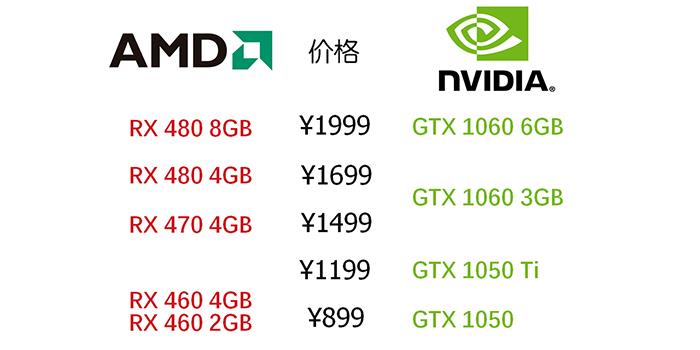
GTX 1050 Ti>X 1050 proofs
Sotai GTX 1050 Ti-4GD5 X-Gaming OC
The appearance of sotai GTX 1050 Ti-4GD5 X-Gaming OC is the same as that of big brother GTX 1060-6GD5 X-Gaming OC.

Slightly different, GTX 1050 Ti is a black dome with a black and white checkered pattern in the middle, which looks more layered. Xiao Bian still thinks that the whole piece of silvery white metal on GTX 1060 is more beautiful.

ZOTAC faith LOGO lights still remain.

Sotai GTX 1050 Ti-4GD5 X-Gaming OC specially added an external power interface of 6Pin to ensure overclocking capability.

The interface is different from the previous GTX 10 series graphics cards, which are two DVI, one DP1.4 and one HDMI2.0 interface.

Due to the low calorific value of GTX 1050 Ti, the official version of GTX 1050 Ti (not for sale, only for display) does not use heat pipes, but an aluminum radiator and a single fan can meet the heat dissipation requirements. It is already a big battle to use copper bottom and double heat pipes in Sotai GTX 1050Ti-4GD5 X-Gaming OC.

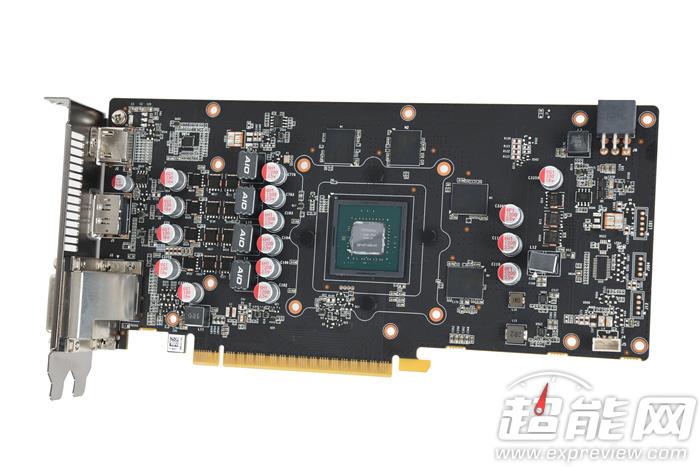
It adopts 4+1 phase power supply design, Sotai’s iconic AIO inductor, and the upper and lower MosFET tubes are covered with aluminum fins.

Samsung’s GDDR5 memory, 8Gb per granule, 4 granules make up 4GB.
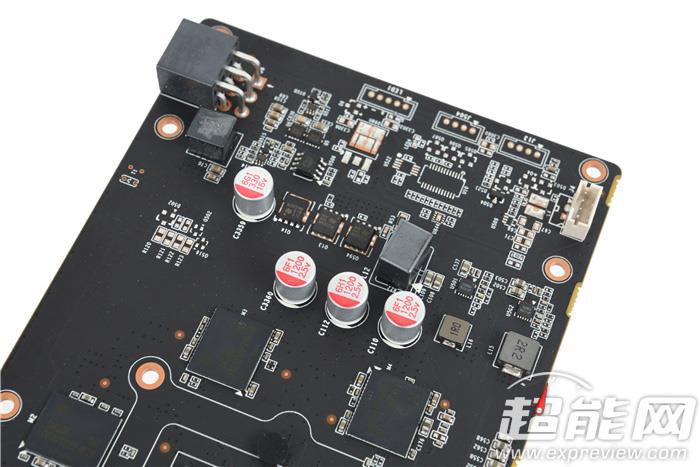

General yingchi GTX 1050 Ti
A highly recognizable box for Shadow Play graphics cards.



The video output interface of the graphics card is two DVI, one DP1.4 and one HDMI2.0 interface.

General yingchi GTX 1050 Ti needs an external 6Pin interface for power supply operation.

Two 7.5cm silent fans deal with the core of GP107, which is simply "cannon hitting mosquitoes".

Yingchi also took care of the GP107 core by using a single heat pipe for direct contact. With large-area aluminum fins, the heat dissipation effect is definitely very good.

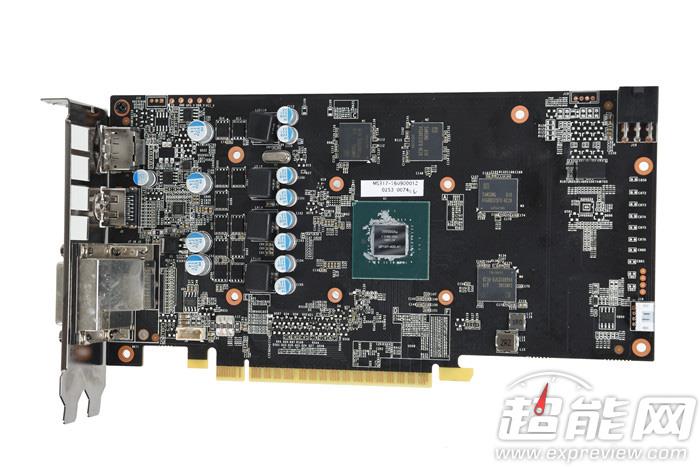
The memory adopts GDDR5 memory particles with Samsung model K4G80325FB-HC28.
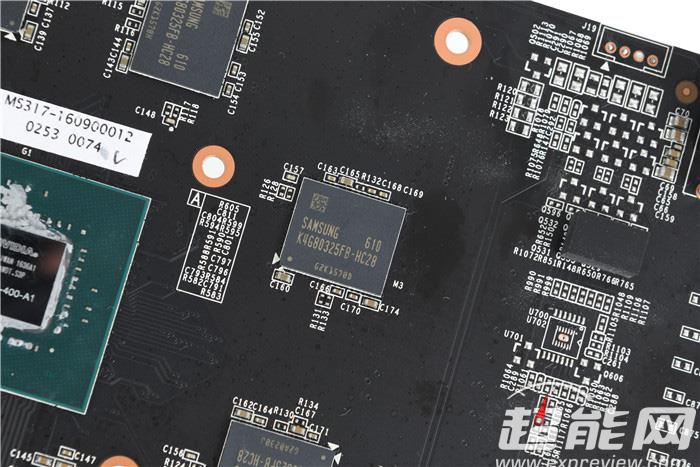
3+1 phase power supply design support.
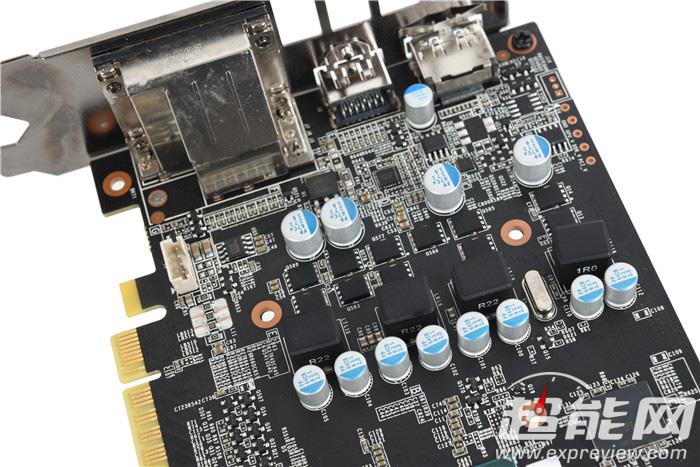
Gengsheng GTX 1050 Ti gale EX

The overall appearance of Gengsheng GTX 1050 Ti Gale EX is very family-style, which always gives people a feeling of deja vu. The sharp lines match the name of Gale.

This GTX 1050 Ti is basically not equipped with a backplane.

The video output interface includes two DVI’s, one DP1.4 and one HDMI2.0 interface. In addition, a Dual BIOS changeover switch is set, which can easily switch between the main BIOS and the auxiliary BIOS to ensure "the brush will not die".

A 6Pin external power supply is needed to cultivate GTX 1050 Ti gale EX.
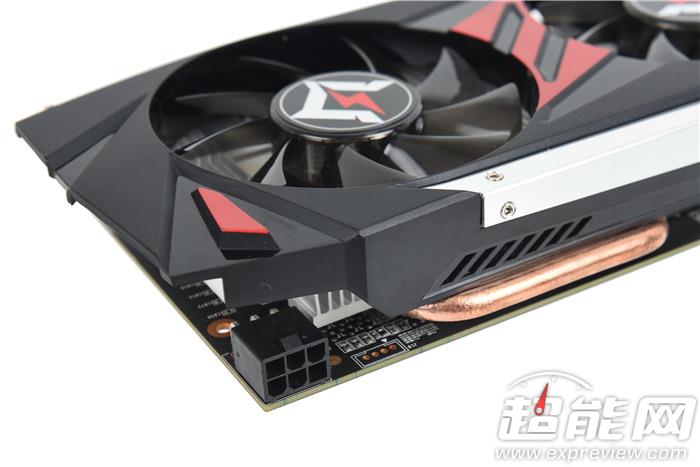
On the front are two 7.5cm ordinary mute fans.

The radiator is in direct contact with a large area aluminum fin and a single heat pipe.


GDDR5 memory particles with Samsung model K4G80325FB-HC28 are adopted.
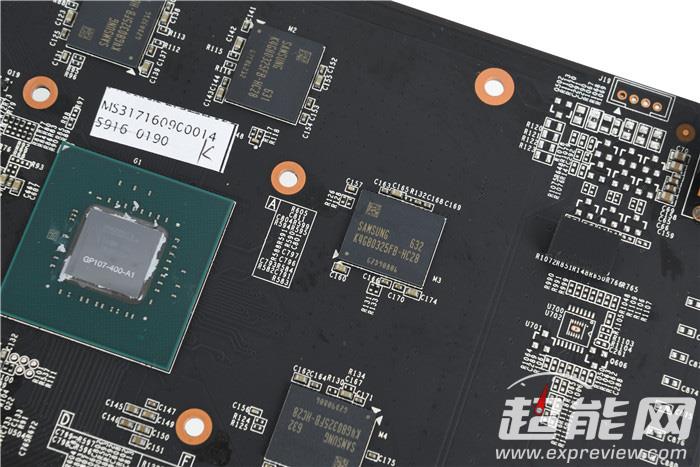
The design of 3+1 phase power supply is enough to meet the requirements of GTX 1050 Ti.
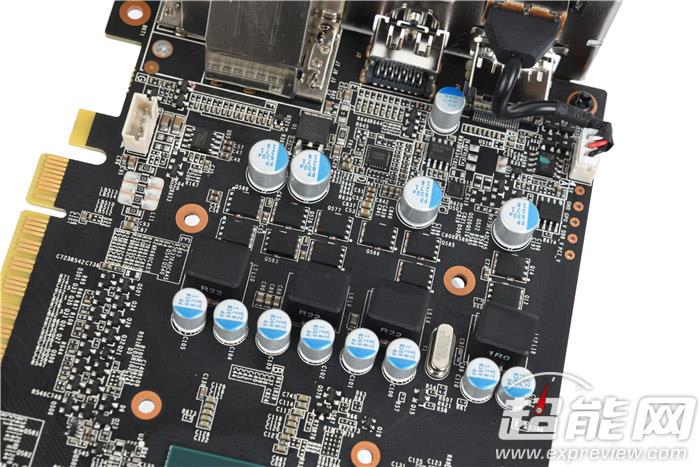
Yingzhong GTX 1050 Black Gold Extreme Edition

Yingzhong GTX 1050 Black Gold Extreme Edition looks very big, in fact, people are also ITX graphics cards.

From the back, you can know that it is ITX size, PCB length is 14.5cm, and the whole length of the graphics card on the protruding part of the radiator is 19cm. But also plug and play without external power supply.

Interface is a standard DVI, a DP1.4 and an HDMI2.0 interface.
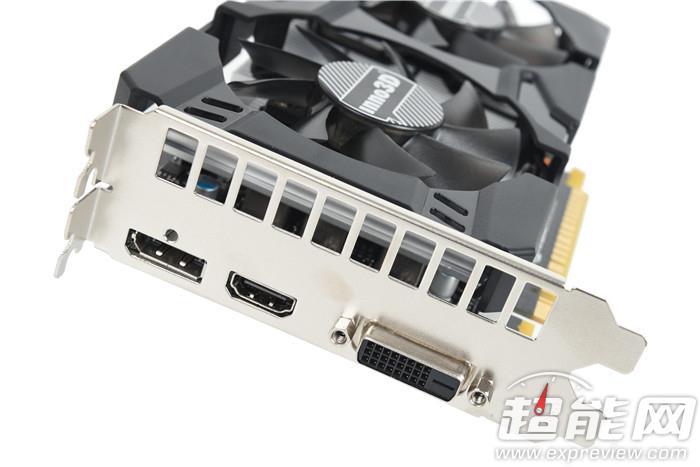
Yingzhong GTX 1050 Black Gold Extreme Edition radiator is also simplified, only equipped with an aluminum fin radiator and two 7.5cm silent fans.

GTX 1050 adopts the new GP107-300 core, but it is a Qual Simple version.
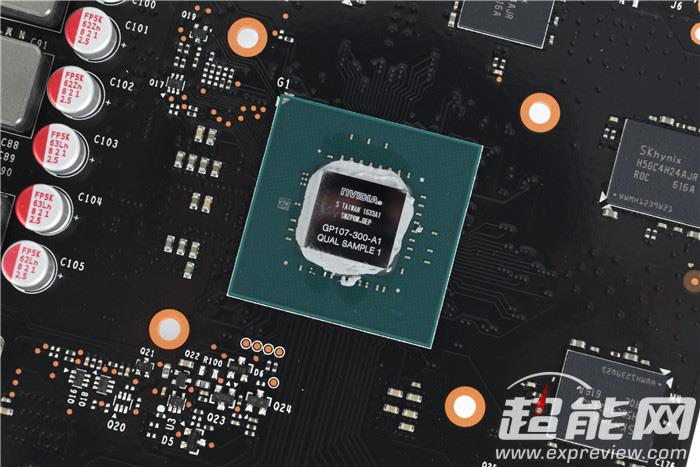
The power supply part inherits the simple and sufficient principle of the public version, and only has 2+1 phase power supply design.
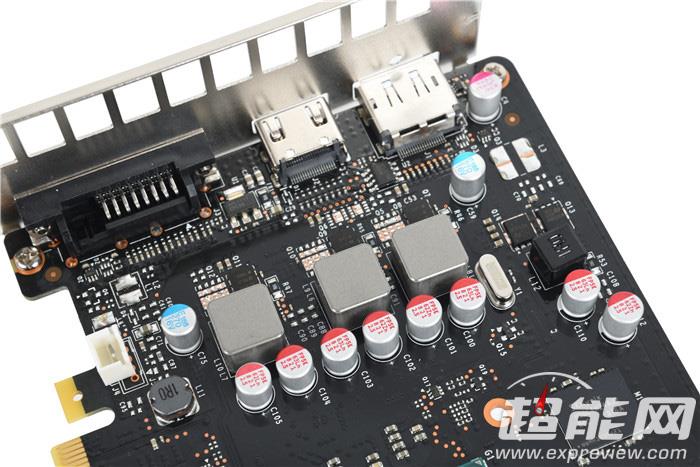
The main memory is H5GC4H24AJR of Hynix.

Test platform and description

As always, the configuration of the test platform is based on Gigabyte Z170X-Designare motherboard, the processor is Intel Core i7-6700K, the frequency range is 4-4.2GHz, the memory is G. Skill DDR 4-2133 MHz with 4 GB * 2 dual channels, and the power supply is Seasonic 1200W Platinum. The system is Microsoft Windows 10 Build 14393. As for the driver, there is no official driver during the test. GTX 1050 Ti and GTX 1050 use the preview version of GeForce 375.57 provided by NVIDIA (unofficial version), while the rest N cards are based on GeForce 375.57, while AMD RX 460 uses the latest Crimson Edition 16.10.2.
The test items include 3DMark(Fire Strike, Time Spy) and Hevean 4.0. This time, the newly-launched popular game War Machinery 4 is added, and there are 8 games with different performance requirements and game types. GTX 1050 Ti and GTX 1050 locate online games and stand-alone games with medium and high quality, so we only test the game results at 1080P resolution.
Benchmark performance test
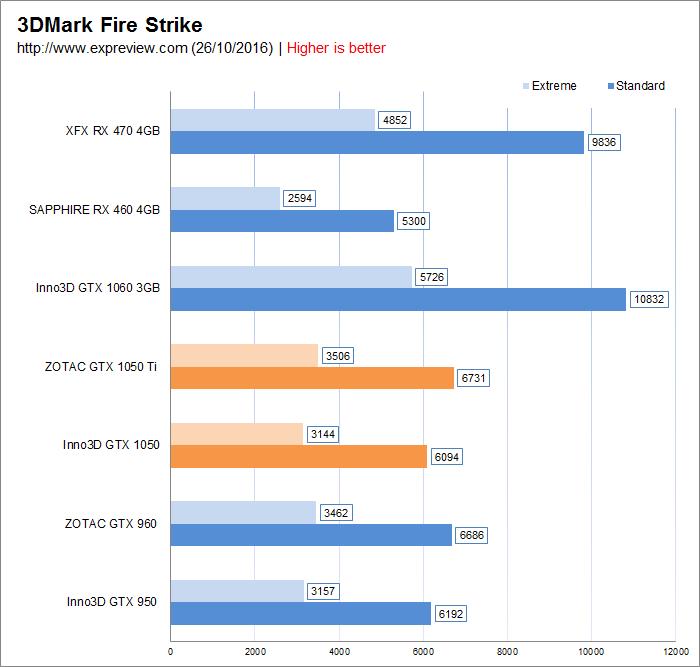
According to the performance improvement of GTX 1080, 1070 and 1060, it is reasonable that GTX 1050 Ti and GTX 1050, as the upgrading, should be much better than the previous generation GTX 950. However, judging from the test results of 3DMark Fire Strike, it seems that everyone is surprised, and the score of GTX 1050 is almost the same as that of GTX 950; GTX 1050 Ti is slightly better than GTX 960, but it seems to be a complete failure as AMD RX 460 at the same price, and the performance gap with GTX 1050 Ti and GTX 1050 is like an inseparable gap. However, AMD’s RX 470 can perfectly surpass GTX 1050 Ti and GTX 1050.

According to the Time Spy test results of the 3DMark DX12 project, Xiaobian’s glasses fell off again. GTX 1050 scores slightly behind GTX 950, and RX 460 also made a beautiful comeback in Time Spy scores; GTX 1050 Ti is only marginally better than GTX 960. Because this is the result of repeated tests, this "pot" seems to have to be carried by the driver. RX 470 4GB also firmly suppresses GTX 1050 Ti and GTX 1050 in Time Spy.

Unigine Heaven 4.0, a test item that is good at subdivision surfaces, and GTX 1050 Ti and GTX 1050 of Pascal architecture are ahead of GTX 960 and GTX 950 of Maxwell architecture in an all-round way, completely abusing RX 460.
DX12 Game Test:
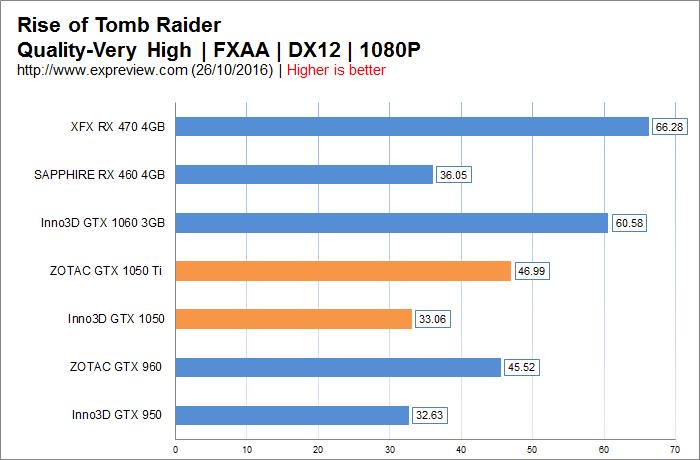
Tomb Raider: Rise is a game that requires extremely abnormal video memory. The results of GTX 1050 and GTX950, both with 2GB video memory, are not good-looking, so even the performance has been behind RX 460 4GB, which can beat GTX 1050 by 3 frames. At the same time, it is also verified that the performance between GTX 1050 Ti and GTX 960 is also half a catty.

In Killer 6, GTX 1050 and GTX950 are at the same level, and GTX 1050 Ti is only ahead of GTX 960 in 4.6 frames, but RX 460 firmly steps on GTX 1050 and GTX950 with 41.1 frames.

The newly added War Machine 4 supports asynchronous operation from Pascal architecture, so this option is turned on when testing GTX 1050 Ti and GTX 1050. However, we can only beat GTX 960 and GTX 950 with extremely weak advantages, while RX 460 is at the bottom.
DX11 Game Test:
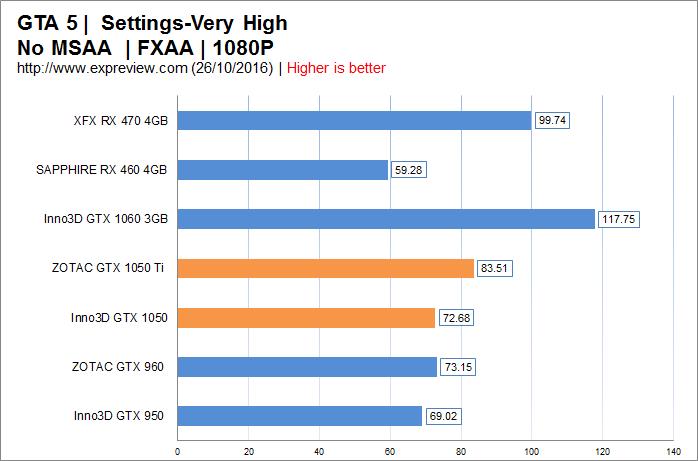
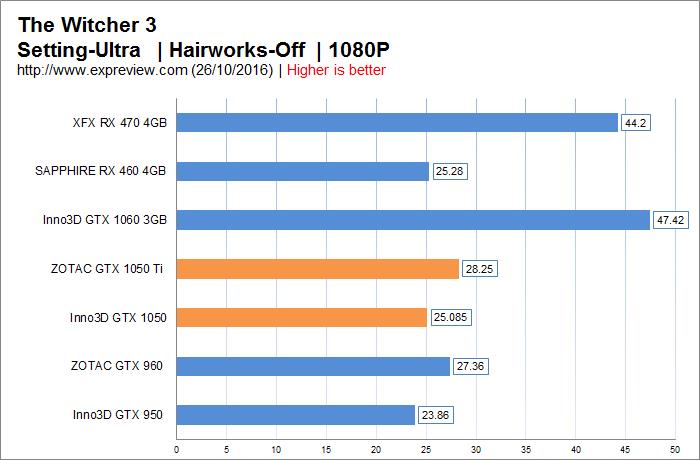
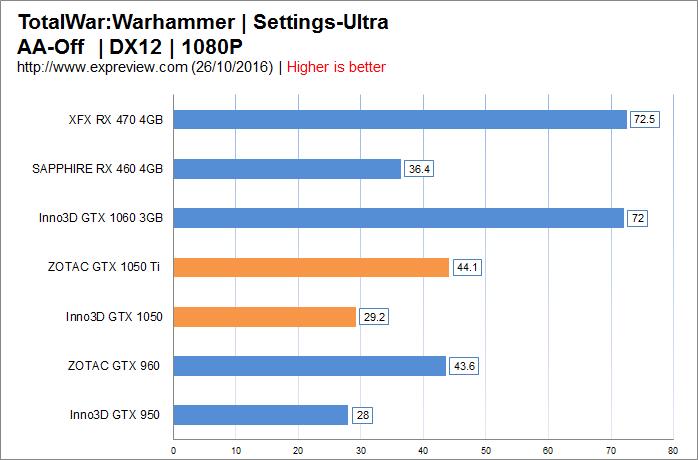
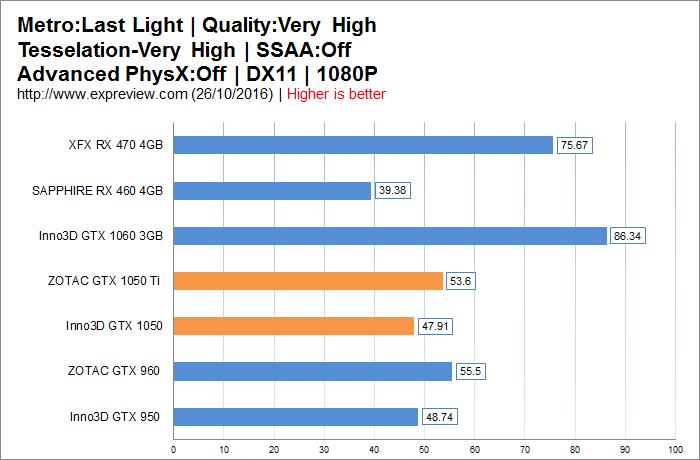


In the whole DX11 game test results, GTX 1050 Ti leads GTX 960 and GTX 1050 leads GTX 950. In the games that need more video memory, RX 460 leads GTX 1050 and GTX 950 with 4GB video memory.
Performance test summary:
The results of this test are summarized in the following table. The data in light gray italics in the table are not counted in the total score. Average all the performance differences, and take GTX 950 as 100% benchmark to get the average performance percentage of each graphics card.

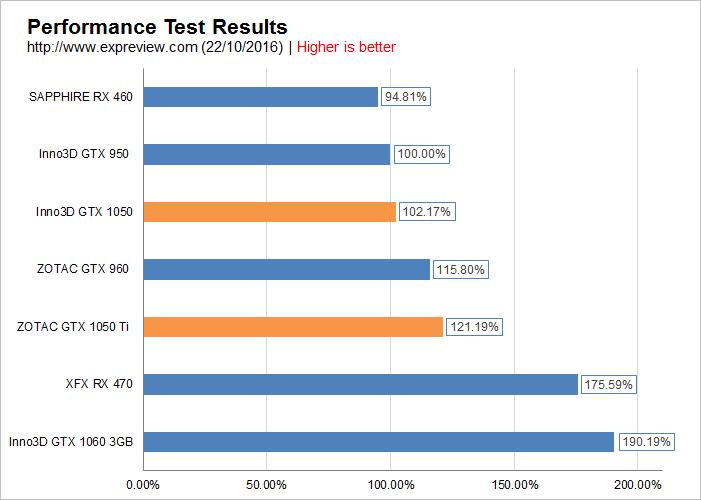
Because the game quality is set to the highest in this test, there is actually some pressure on the GPU core load of this grade of graphics card, and the gap between them may be narrowed.
The test results show that the performance difference between GTX 1050 and GTX 950 is 2.17%, which can be removed as cumulative error, that is to say, the performance of GTX 1050 and GTX 950 is the same, which is only about half that of GTX 1060 3GB.
The average score of GTX 1050 Ti is 5.39% higher than that of GTX 960. Specifically, the difference in the number of game frames is only 2-3 frames, and the performance is about 64% of GTX 1060 3GB.
Under the average score, the performance of GTX 1050 and RX 460 is also very close. This is because the RX 460 tested has 4GB, and some of the tested games require extremely high memory, so RX 460 can turn the tide and catch up with GTX 1050. But for GTX 1050 Ti, which also has 4GB, there is nothing to be done, only to be hanged.
However, the hardware specification of RX 470 4GB is much higher than that of RX 460, so the performance of RX 470 is far better than that of GTX 1050 Ti and GTX 1050. Therefore, the performance of RX 470D, a special edition of China, should continue to lead, and the imaginary enemy points to GTX 1050 Ti.
Power consumption and temperature test:
Through our specially purchased power consumption testing instrument for graphics card, the wattage of PCI-E and external power interface of graphics card can be accurately measured respectively, and the maximum power consumption of graphics card is obtained in 3DMark Fire Strike stress test. At the request of readers, we added the power consumption test item of the whole machine again, and the maximum power consumption of the whole machine was obtained in Tomb Raider: Rise Benchmark.
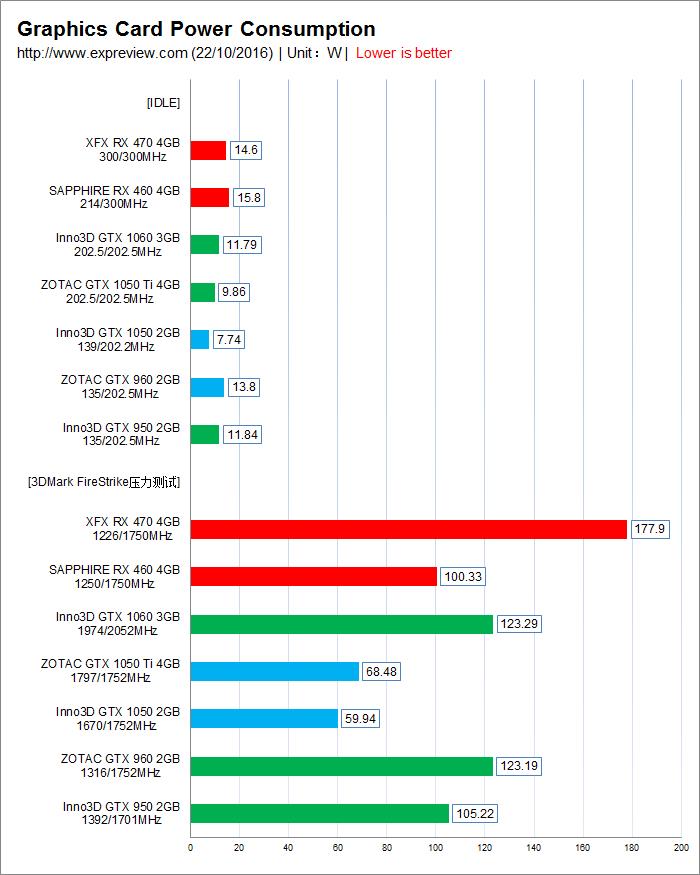
From the power consumption test results of individual graphics cards, it can be seen that Samsung’s 14nm process can also have good energy consumption performance. The power consumption of GTX 1050 Ti and GTX 1050 in standby state is 9.86W and 7.74W, respectively, which is better than that of the previous generation Maxwell. Under full load, both of them perform extremely well, both of which are below 75W, so there is no need to worry about the power shortage of PCI-E. AMD’s power consumption control has always been a difficult problem. The 15.8W of RX 460 and the 14.6W of RX 470 4GB are simply terrible.
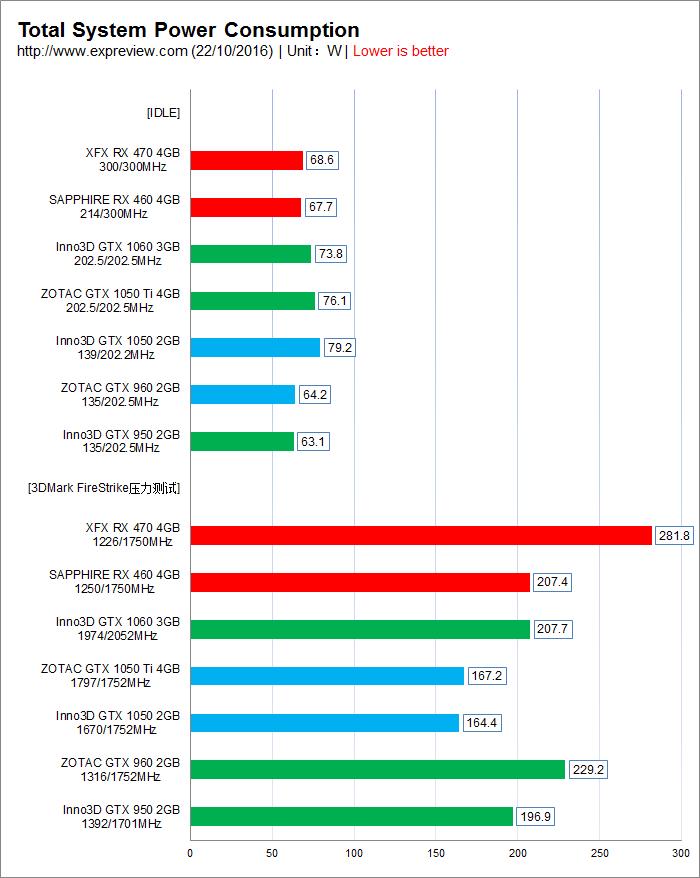
On the power consumption of the whole machine, GTX 1050 Ti and GTX 1050 are abnormally larger than the other four graphics cards. However, when running the Benchmark full of Tomb Raider: Rise, the characteristics of the ultra-high energy consumption ratio of GP107 core are more obvious, all hovering at 160 W. The GTX 950 and 960 with similar performance in the previous generation were 196.9W and 229.2W. It seems that the power consumption control of Samsung’s 14nm FinFET process is quite good. What about the overclocking ability?
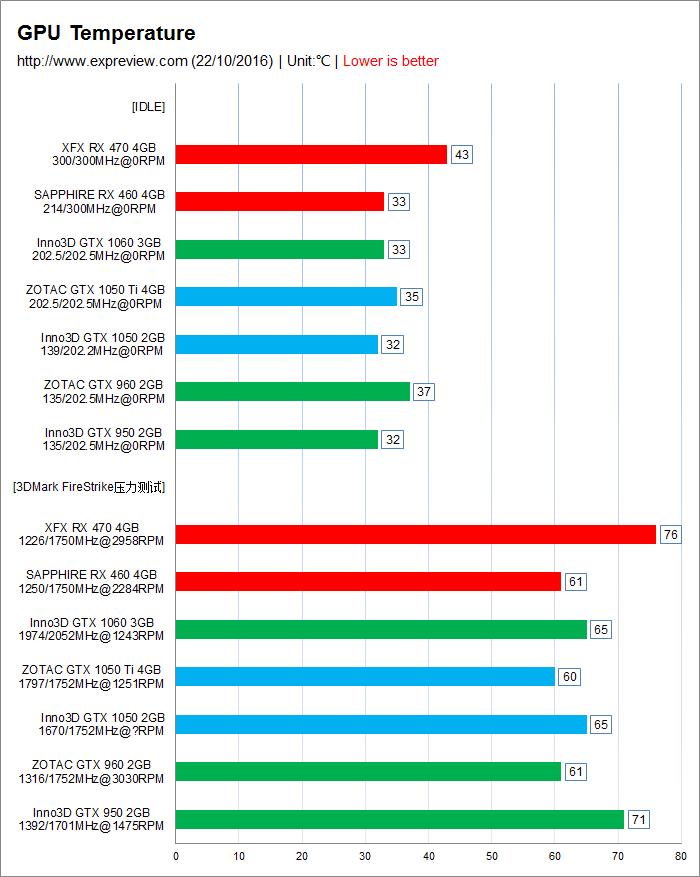
In terms of temperature, due to the full introduction of low-temperature stall technology in this year’s graphics card, all six graphics card fans stopped operating in standby state, and the temperature was in the early 30 degrees. Under full load, Sotai’s GTX 1050 Ti double heat pipe works well. The fan speed is 1251RPM and the temperature is only 60 degrees, which is the lowest among the six graphics cards. Inno3D, on the other hand, has a slightly higher temperature of 65 degrees because it only uses aluminum fins.
Overfrequency test:
Since Pascal architecture no longer supports the pressurization of GPU, we can only lift the upper limit of TDP and adjust the fan speed to 100% at the same time, so as to avoid the frequency reduction due to overheating and affect the overclocking performance.
Through continuous attempts, the GPU core frequency is continuously raised until the frequency fails to pass the 3DMark Fire Strike test, and the previous overclocking frequency that can pass the test is recorded.
However, the core situation of GP107 is very special, which can continuously increase the core basic frequency and memory frequency. However, after overclocking to a bottleneck value, its 3DMark Fire Strike test can pass, but its performance has declined.
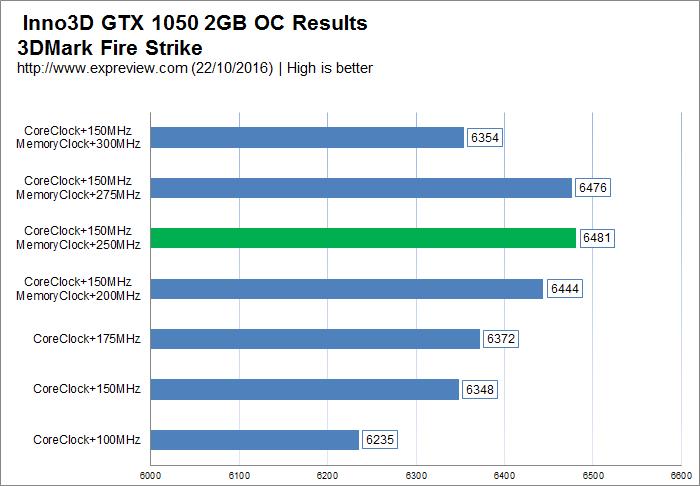

We increased the basic frequency of Inno3D GTX 1050 to 1860MHz, and the video memory frequency to 1877MHz (equivalent to 7508MHz). The highest score of 3DMark Fire Strike was 6481, and the performance was 5% higher than the default.
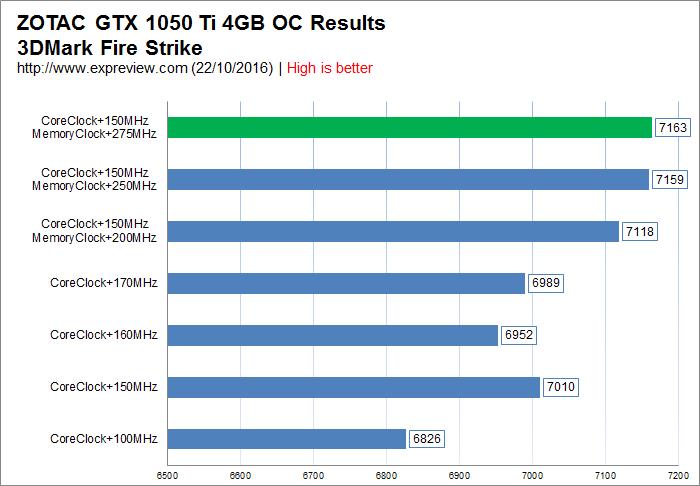
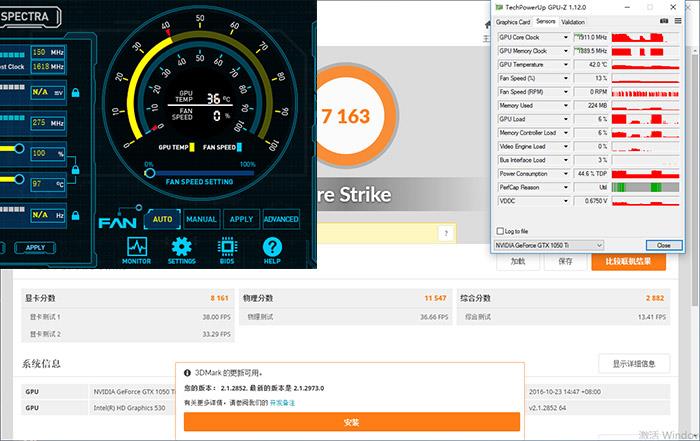
The ZOTAC GTX 1050 Ti has a fundamental frequency of 1911MHz and a video memory frequency of 1889.5MHz (equivalent to 7556MHz), and the highest score of 3DMark Fire Strike is 7163, which is 5% higher than the default.
Summary:

NVIDIA said in its official press conference that GTX 1050 Ti and GTX 1050 are mainly for users who pay attention to cost performance and have not upgraded for two or three years, as well as the vast Internet cafes and Internet cafes market in China.
According to our test results, the performance of GTX 1050 Ti is improved by about 5% compared with GTX 960, which is unmatched in AMD camp. However, its pricing from 1199 yuan is on the high side, compared with 1499 yuan of RX 470 4GB, in fact, GTX 1050 Ti is not cost-effective. In addition, AMD China released the customized graphics card RX 470D of China on the evening of October 21st, which is also aimed at users who are pursuing cost performance and Internet cafe market. It seems that this is the only rival of GTX 1050 Ti. To know the result of the duel, please wait for the synchronous evaluation on October 28th.
Compared with GTX 950, GTX 1050 is almost at the same level, and there is almost no improvement in performance, even if the overclocking performance is limited. However, for RX 460 with the same price of 899 yuan, GTX 1050 DX11 has better game performance and energy consumption ratio. If it is for GTX 650 and GTX 750Ti two or three years ago, the upgrade will be relatively large, and these users just need to buy. Compared with Maxwell, Pascal architecture has the greatest advantage over Maxwell in the graphics card with a level of about 1,000 yuan.
Purchase suggestion:
If you still have GTX 960 and GTX 950, it is seriously not recommended that you upgrade to the graphics card with Pascal GP107 core, because the performance improvement is really limited, but you can choose GTX 1060 3GB with GP104 core, and the performance improvement is guaranteed to satisfy you.
If you still have an old graphics card three years ago, and your budget is limited, and you only play online games and stand-alone games with 1080P resolution and high-end special effects, GTX 1050 Ti and GTX 1050 are still worth updating. After all, they have good performance improvement and lower power consumption.
Due to the insufficient supply of GP107 core in the early stage, GTX 1050 Ti will deliver the goods first, and GTX 1050 will deliver the goods on a large scale later. Moreover, if the double eleven is approaching and the purse surplus is insufficient, you can consider buying GTX 1050 Ti during the period.
